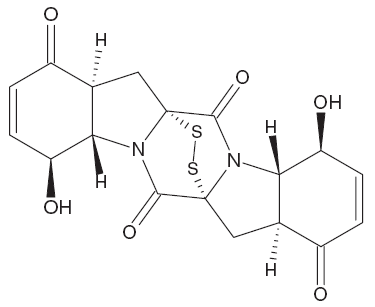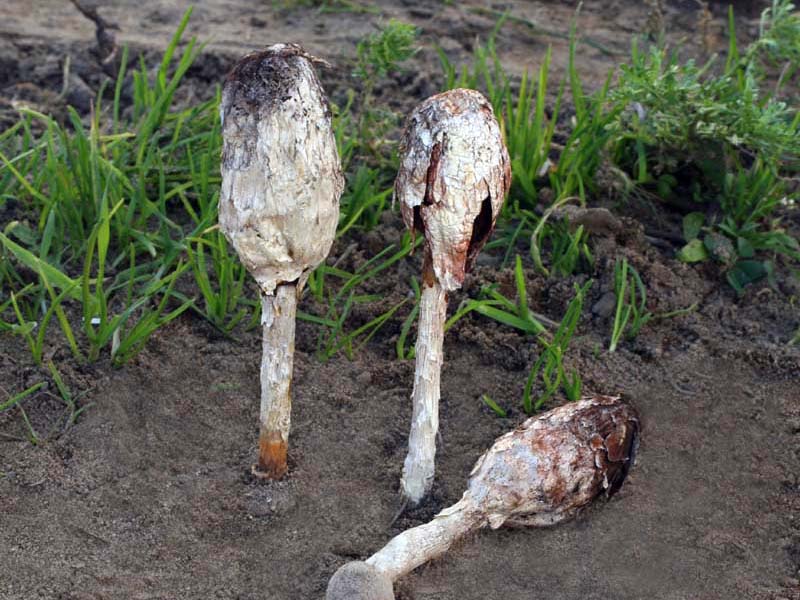The false shaggy mane, Podaxis pistillaris.
Synonym
Lycoperdon pistillare
Common Names
False shaggy mane
Khumbhi
Description
Gasterocarp: 2-15 cm in height, 1-4 cm broad. The surface is dry, pure white to tan, yellow-brown or brown, typically breaking up to form shaggy fibrils or scales which may eventually wear away to reveal the smooth surface underneath.
Stem: up to 1 cm diameter, pale to brown, narrowing to the top with an enlarged bulbous base.
Gleba: deep brown to black at maturity.
See here for a more complete description.

My name is Austin Collins.
I've dedicated my life to Mushrooms.
I believe Mushrooms are the best kept secret when it comes to health and well being.
For that reason, I would like to share a company with you that in my opinion makes the best mushroom products on the market.
The company is called Noomadic Herbals, my favorite supplement they make is called "Mushroom Total".
I take their products every day and they have helped me think better and have more energy. Give them a try.
-Austin
Distribution
P. pistillaris has been found in a number of locales, including:
Afghanistan (Watling and Gregory, 1977)
Africa (Dring, 1964)
Argentina (Martinez, 1971)
Australia (Hilton and Kenneally, 1981)
Brazil (Baseia and Galvão, 2002)
Congo (Dissing and Lange, 1962)
Iran (Watling and Gregory, 1977)
Israel (Dring and Rayss, 1963; Binyamini, 1973)
Pakistan (Sultana et al., 2007)
South Africa (Bottomley, 1948)
USA (Brasfield, 1937)
The fungus is typically found in semideserts, and is often associated with termite mounds. No species of the Podaxis genus has been found in Europe or Japan (Dominguez de Toledo, 1993).
The fruiting bodies of P. pistillaris are used in some parts of Yemen for the treatment of skin diseases, in South Africa as folk medicine against sunburn. In other countries, e.g. India, Afghanistan and Saudi Arabia, they are used as food (Gupta and Singh, 1991). In Australia, the fungus was often used by Aborigines to darken the white hair in the whiskers of old men, for body painting and as a fly repellent (Australian National Botanic Gardens: Fungi Web Site).
Cultivation
Cultivation of the fruiting bodies has been reported (Jandaik and Kapoor, 1976; Phutela et al., 1998).
Composition
The fruiting bodies of P. pistillaris contain 76% moisture, 5% total nitrogen, 22-37% total crude protein, 18.5% carbohydrates, 2.3% total lipids and 2.4% ash (Khaliel et al., 1991). Carbohydrate analysis revealed 15.0% reducing sugars (Gupta and Kapoor, 1990).
Bioactive compounds
A high value for total lanthanides was measured in this mushroom (75 mg/kg dry weight) (Stijve et al., 2001).
In the culture medium of P. pistillaris three epidithiodiketopiperazines were identified as epicorazines A, B and C (Al-Fatimi et al., 2006). These three molecules appear to be structurally identical except for their chirality.

Medicinal properties
Antinflammatory activity
The fungi have been reported to be used in China to treat inflammation (Mao, 2000), but I have not found any scientific evidence that might support this usage.
Antimicrobial activity
Antimicrobial activities against Pseudomonas aeruginosa and Proteus mirabilis have been reported (Panwar and Purohit, 2002). Additionally, antibacterial activity against Staphylococcus aureus, Micrococcus flavus, Bacillus subtilis, Proteus mirabilis, Serratia marcescens and Escherichia coli is attributed to the epicorazines described below (Al-Fatimi et al., 2006).
References
Al-Fatimi MA, Julich WD, Jansen R, Lindequist U.
Bioactive components of the traditionally used mushroom Podaxis pistillaris.
Evid Based Complement Alternat Med. 2006 3(1):87-92.
Baseia IG, Galvão TC.
Some interesting gasteromycetes (Basidiomycota) in dry areas from northeastern Brazil.
Acta Bot Bras. 2002. 16(1): 1-8.
Binyamini N.
Gasteromycetes of Sinai desert.
Isr. J. Bot. 1973. 22: 33-37.
Bottomley AM.
Gasteromycetes of South Africa.
Bothalia. 1948. 4: 473-810.
Brasfield TW.
The morphology of Podaxis pistillaris.
Univ. Iowa Stud. Nat. Hist. 1937. 17: 100-121.
Dissing H, Lange M.
Gasteromycetes of Congo.
Bull. Jard. Bot. L’etat. 1962. 32 (4): 325-416.
Dominguez de Toledo L.
Gasteromycetes (Eumycota) del centro y oeste de la Argentina. I. Analisis critico de los caracteres taxonomicos, clave de generos y orden Podaxales.
Darwiniana 1993 32:195–235 (Spanish).
Dring DM, Rayss T.
The Gasteromycete fungi of Israel.
Isr. J. Bot. 1963. 12: 147-178.
Dring DM.
Gasteromycetes of West Tropical Africa.
Mycological Papers. 1964. 98:1-60.
Giannini EH, Northey WT, Leathers CR.
The allergenic significance of certain fungi rarely reported as allergens.
Ann Allergy. 1975 35(6):372-6.
Gupta S, Kapoor VP.
Carbohydrate analysis of some edible mushrooms.
Vegetable Science. 1990. 17(2):227-9.
Gupta S, Singh SP.
Nutritive value of mushroom Podaxis pistillaris.
Indian J Mycol Plant Pathol 1991 21:273–6.
Hilton RN, Kenneally KF.
The desert Coprinus fungus Podaxis pistillaris in Western Australia.
West. Aust. Nat. 1981. 15: 21-26.
Hopple JS Jr, Vilgalys R.
Phylogenetic relationships in the mushroom genus Coprinus and dark-spored allies based on sequence data from the nuclear gene coding for the large ribosomal subunit RNA: divergent domains, outgroups, and monophyly.
Mol Phylogenet Evol. 1999 13(1):1-19.
Jandaik CL, Kapoor CN.
Studies on vitamin requirements of some edible fungi.
Indian Phytopathol. 1976 29:259–61.
Khaliel AS, Abou-Heilah AN, Kassim MY.
The main constituents and nutritive value of Podaxis pistillaris.
Acta Bot Hung. 1991 36:173–9.
Khaliel AS, Abou-Heilah AN, Kassim MY.
The nutrient composition of Podaxis pistillaris.
Arab Gulf J Sci Res. 1989 7(3):121-8.
Khan SM, Khan DA.
Temperature studies on Podaxis pistillaris.
Mycologia. 1979 71(4):861-67.
Mao XL.
The Macrofungi in China.
Zhengzou: Henan Science and Technology Press, 2000. (Chinese)
Martínez A.
Notes sobre el genero Podaxis (Gasteromycetes) en Argentina.
Bol Soc. Argent. Bot. 1971. 14: 73-87.
Panwar Ch, Purohit DK.
Antimicrobial activities of Podaxis pistillaris and Phellorinia inquinans against Pseudomonas aeruginosa and Proteus mirabilis.
Mushroom Res. 2002 11:43–4.
Phutela RP, Kaur H, Sodhi HS.
Physiology of an edible gasteromycete, Podaxis pistillaris (Lin. Ex Pers.) Fr.
J Mycol Plant Pathol. 1998 28: 31–7.
Stijve T, Andrey D, Lucchini GF, Goessler W.
Simultaneous uptake of rare elements, aluminium, iron, and calcium by various macromycetes.
Aust Mycol. 2001 20:92–8.
Sultana K., Gul M, Firdous SS, Asghar R.
Hymenomycetes from Multan District.
Pakistan J Bot. 2007. 39(2):651-7.
Watling R, Gregory NM.
Larger fungi from Turkey, Iran and neighboring countries.
Karstenia. 1977. 17:70.



